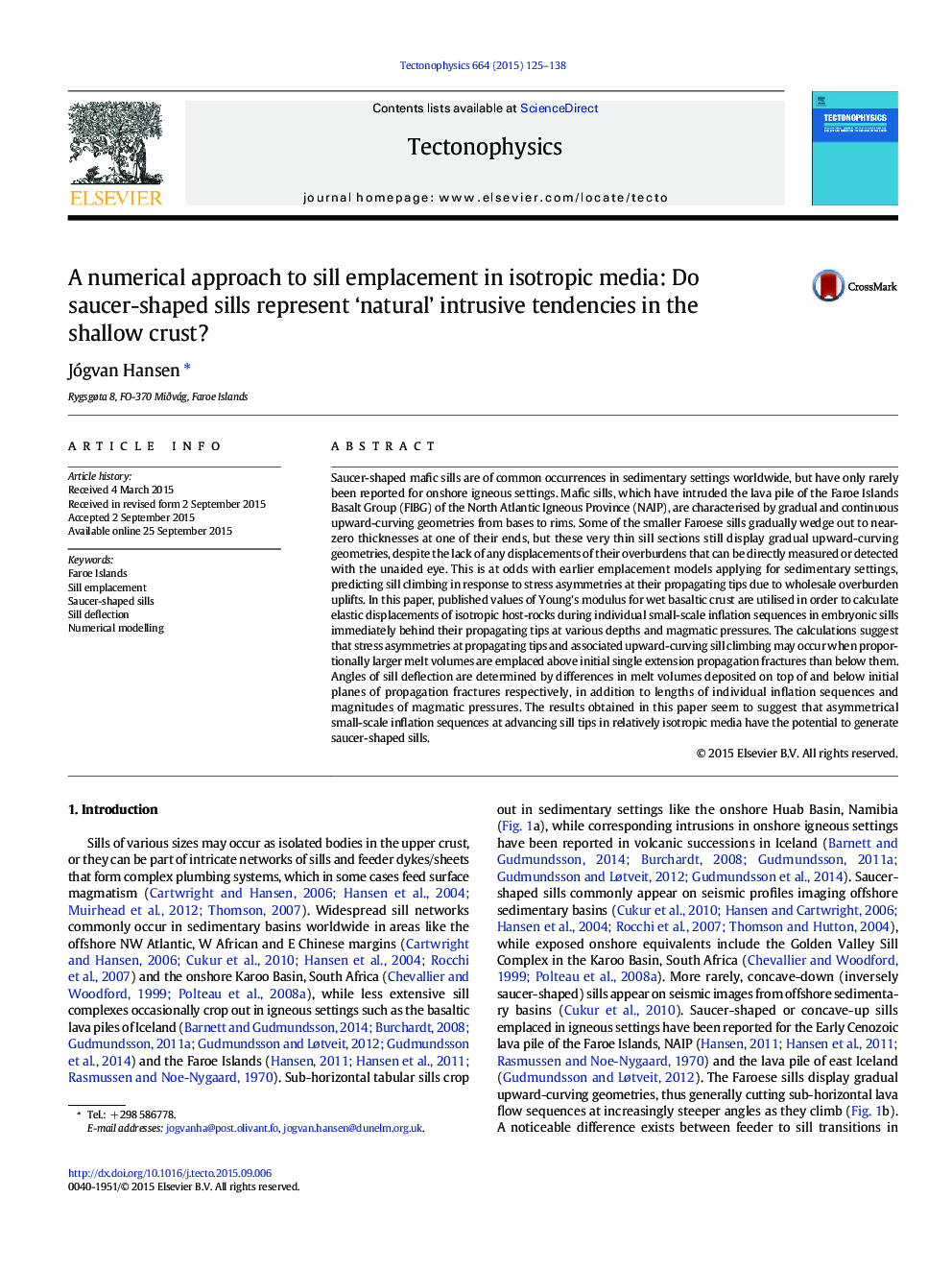| کد مقاله | کد نشریه | سال انتشار | مقاله انگلیسی | نسخه تمام متن |
|---|---|---|---|---|
| 6433589 | 1636731 | 2015 | 14 صفحه PDF | دانلود رایگان |

- I calculate sill intrusion in isotropic media at different crustal levels/pressures.
- I examine effects of systematic variations in Young's modulus on sill intrusion.
- Sill intrusion in basaltic media may differ from sills in sedimentary settings.
- Systematic depth related increase in Young's modulus results in upward-curved sills.
- Magmatic driving pressures and tip cavity lengths influence angles of sill climbing.
Saucer-shaped mafic sills are of common occurrences in sedimentary settings worldwide, but have only rarely been reported for onshore igneous settings. Mafic sills, which have intruded the lava pile of the Faroe Islands Basalt Group (FIBG) of the North Atlantic Igneous Province (NAIP), are characterised by gradual and continuous upward-curving geometries from bases to rims. Some of the smaller Faroese sills gradually wedge out to near-zero thicknesses at one of their ends, but these very thin sill sections still display gradual upward-curving geometries, despite the lack of any displacements of their overburdens that can be directly measured or detected with the unaided eye. This is at odds with earlier emplacement models applying for sedimentary settings, predicting sill climbing in response to stress asymmetries at their propagating tips due to wholesale overburden uplifts. In this paper, published values of Young's modulus for wet basaltic crust are utilised in order to calculate elastic displacements of isotropic host-rocks during individual small-scale inflation sequences in embryonic sills immediately behind their propagating tips at various depths and magmatic pressures. The calculations suggest that stress asymmetries at propagating tips and associated upward-curving sill climbing may occur when proportionally larger melt volumes are emplaced above initial single extension propagation fractures than below them. Angles of sill deflection are determined by differences in melt volumes deposited on top of and below initial planes of propagation fractures respectively, in addition to lengths of individual inflation sequences and magnitudes of magmatic pressures. The results obtained in this paper seem to suggest that asymmetrical small-scale inflation sequences at advancing sill tips in relatively isotropic media have the potential to generate saucer-shaped sills.
Journal: Tectonophysics - Volume 664, 28 November 2015, Pages 125-138